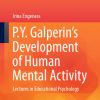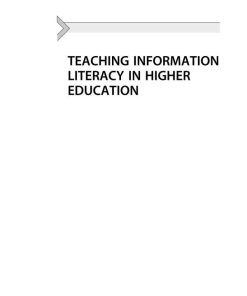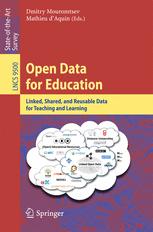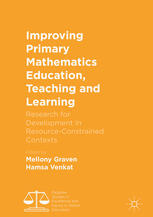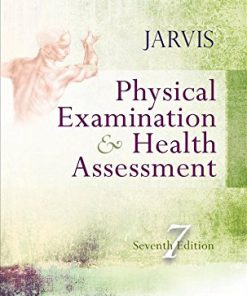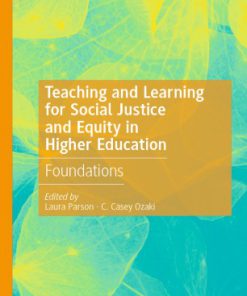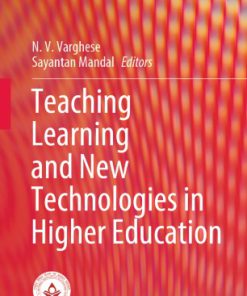Teaching physical education for learning 7th Edition by Judith Rink ISBN 9780077551728 0077551729
$50.00 Original price was: $50.00.$25.00Current price is: $25.00.
Teaching physical education for learning 7th Edition by Judith Rink – Ebook PDF Instant Download/Delivery: 9780077551728 ,0077551729
Full download Teaching physical education for learning 7th Edition after payment
Product details:
ISBN 10: 0077551729
ISBN 13: 9780077551728
Author: Judith Rink
Teaching physical education for learning 7th Edition Table of contents:
PART I. Understanding the Teaching-Learning Process
1. TEACHING PHYSICAL EDUCATION: AN ORIENTATION
Teaching as a Profession
What Does It Mean to Act Professionally?
Professional Teachers Acquire the Skills for Best Practice
Teaching as a Goal-Oriented Activity
Types of Goals
Establishing Realistic Goals
Choosing Instructional Processes to Meet Goals
Achieving Goals Through Processes
Understanding the Instructional Process
Prelesson and Postlesson Routines
Movement Task–Student Response Unit of Analysis
Teaching Functions
Management and Content Behavior
Value Positions and Beliefs in Teaching
Personal Characteristics of a Teacher
Summary
Checking Your Understanding
2. FACTORS THAT INFLUENCE LEARNING
The Relationship Between Motor Skill Competence and Physical Activity
What Is Learning?
How Do People Learn Motor Skills?
Understanding the Control of Movement
Stages of Motor Learning
Requirements for Learning a Motor Skill
Prerequisites
Clear Idea of the Task
Motivational/Attentional Disposition to the Skill
Practice
Feedback
The Nature of Motor Skill Goals
Open and Closed Skills
Discrete, Serial, and Continuous Skills
Issues of Appropriateness in Skill Development and Learning
Environmental Conditions
Learner Abilities
Practice Conditions
Whole or Part
Practice Variability
Massed and Distributed Practice
Motivation and Goal Setting
Transfer of Learning
Bilateral Transfer
Intertask Transfer
Intratask Transfer
Learner Characteristics
Motor Ability
Intelligence and Cognitive Development
Summary
Checking Your Understanding
PART II. Effective Teaching Skills
3. DESIGNING LEARNING EXPERIENCES AND TASKS
Criteria for a Learning Experience
Criterion One
Criterion Two
Criterion Three
Criterion Four
Designing the Movement Task
Content Dimension of Movement Tasks
Goal-Setting Dimension of the Task
Organizational Arrangements for Tasks
Transitions from One Organization to Another
Student Decision Making in Environmental Arrangements
The Influence of the Nature of Motor Content on the Design of a Learning Experience
Closed Skills
Open Skills
Designing Learning Experiences That Are Safe
Teacher Legal Liability for Student Safety
Summary
Checking Your Understanding
4. TASK PRESENTATION
Getting the Attention of the Learner
Establishing Signals and Procedures
Student Preoccupation with Other Environmental Factors
Inability to Hear or See
Inefficient Use of Time
Sequencing the Content and Organizational Aspects of Tasks
Improving the Clarity of Communication
Orient the Learner (Set Induction)
Sequence the Presentation in Logical Order
Give Examples and Nonexamples
Personalize the Presentation
Repeat Things Difficult to Understand
Draw on the Personal Experience of Students for Transfer
Check for Understanding
Present Material Dynamically
Choosing a Way to Communicate
Verbal Communication
Demonstration
Media Materials
Selecting and Organizing Learning Cues
Good Cues Are Accurate
Good Cues Are Brief and Critical to the Skill Being Performed
Good Cues Are Appropriate to the Learner’s Skill Level and Age
Good Cues Are Appropriate for Different Types of Content
Cues Are More Effective If They Are Sequentially Organized and Learners Have the Opportunity to Rehe
Summary
Checking Your Understanding
5. CONTENT ANALYSIS AND DEVELOPMENT
The Process of Content Development—Overview
Establish a Progression (Extension)
Demonstrate a Concern for Quality of Performance (Refinement)
Give Students an Opportunity to Apply/Assess Their Skills (Application)
Planning for Content Development: The Developmental Analysis
Developing Extension Tasks—The Teacher’s Progression
Adding the Qualities of Refinement
Designing Application/Assessment Experiences for Content
What Content Development Looks Like in a Real Lesson
Guidelines for Developing Different Types of Content
Developing Closed Skills
Developing Closed Skills Performed in Different Environments
Developing Open Skills
Teaching Games and Sports
The Games Stages
Considerations Using the Games Stages
Summary
Checking Your Understanding
6. DEVELOPING AND MAINTAINING A LEARNING ENVIRONMENT
The Ecology of the Gymnasium
Establishing and Maintaining a Management System
Establishing Routines
Establishing Class Rules
Gaining and Maintaining the Cooperation of Students
Strategies for Developing Student Self-Control and Responsibility
Hellison’s Levels of Responsibility
Behavior Modification
Authoritative Orientations to Management
Group Process Strategies for Developing Self-Direction
Conflict Resolution
Discipline: What to Do If It Does Not Work
Deterring Problems Before They Become Problems
Continued Inappropriate Behavior
Handling Students Who Continually Misbehave
Summary
Checking Your Understanding
7. TEACHING DURING ACTIVITY
I’ve Sent the Students Off to Practice—Now What?
Setting Priorities of What to Do First
Maintaining a Safe Learning Environment
Clarifying and Reinforcing Tasks for Learners
Maintaining a Productive Learning Environment
Observing and Analyzing Student Responses
Positioning of the Teacher
Determining a Plan for Observing Large Groups
Knowing What to Look For
Providing Feedback to Learners
Evaluative and Corrective Feedback
Congruency of Feedback
General Versus Specific Feedback
Negative Versus Positive Feedback
The Target of Feedback
Timing of Feedback
Use of Feedback to Promote Student Understanding
Changing and Modifying Tasks for Individuals and Small Groups
Extending the Task for Individuals
Designing Applying/Assessment Task for Individuals
Changing the Task Completely for Individuals
Refining the Task for Individuals
Indirectly Contributing Behaviors
Attending to Injured Students
Engaging in Off-Topic Discussions
Dealing with the Personal Needs of Students
Participating with Students and Officiating
Noncontributing Behaviors
Summary
Checking Your Understanding
8. TEACHING STRATEGIES
Direct and Indirect Instruction
The Teaching Strategy as a Delivery System
Selection of Content
Communication of Tasks
Progression of Content
Provision for Feedback and Evaluation
The Teaching Strategies Described
Interactive Teaching
Elementary School
High School
Station Teaching
Peer Teaching
Cooperative Learning
Self-Instructional Strategies
Cognitive Strategies
Team Teaching
Selecting a Teaching Strategy
Summary
Checking Your Understanding
9. STUDENT MOTIVATION, PERSONAL GROWTH, AND INCLUSION
Motivation in Learning
Theories of Motivation—The Why of Behavior
Behaviorism
Social Learning Theory
Self-Determination Theory
Achievement Goal and Social Goals Theory
Interest Theories
Designing Experiences to Develop Personal and Situational Interest
Implications of Theories of Motivation
Promoting Personal Growth Through Personal Interaction
Motivation and Personal Growth Through Instructional Decision Making
Planning
Selection of Tasks and Design of Learning Experiences
Presentation of Units and Tasks
Organizational Arrangements
Teacher Functions During Activity
Pacing of Lessons
Assessment of Tasks, Units, and Lessons
Teaching Affective Goals as a Lesson Focus
The Unique and Shared Affective Goals of Physical Education
Instructional Strategies for Teaching Affect
Physical Education for Inclusion
Becoming Aware
Developing a Climate for Inclusion
Building Equity
Gender Equity
Ethnic and Cultural Differences
Disadvantaged Students
Students with Disabilities
Discussion of Affective Goals for Physical Education
Summary
Checking Your Understanding
10. PLANNING
Establishing Goals and Learning Outcomes
Writing Learning Outcomes in Terms of What Students Will Learn
Levels of Specificity in Educational Objectives
Objectives in the Three Learning Domains
Writing Outcomes Consistent with Content Standards
Planning Physical Education Experiences
Planning the Lesson
Beginning the Lesson
Developing the Lesson
Ending the Lesson—Closure
Format for Lesson Planning
Planning the Curriculum
Developing Curriculum from a Set of Standards
Planning for Units of Instruction
Considerations in Planning Units
Developing the Unit
The Unit Plan
Summary
Checking Your Understanding
11. ASSESSMENT IN THE INSTRUCTIONAL PROCESS
The Role of Assessment in Physical Education Programs
Formative and Summative Assessment
Formative Assessment
Summative Assessment
Validity and Reliability Issues of Assessment
Validity of Assessment Measures
Reliability of Assessment Measures
Collecting Information: Formal and Informal Evaluation
Alternative Assessment
Checklists
Rating Scales
Scoring Rubrics
Types of Student Assessment
Observation
Event Tasks
Student Journals
Portfolio
Written Test
Skill Tests
Student/Group Projects and Reports
Student Logs
Student Interviews, Surveys, and Questionnaires
Parental Reports
Making Assessment a Practical and Important Part of Your Program
Establish Criteria
Use Self-Testing Tasks Frequently
Use Simple Check Sheets and Rating Scales
Use Peer Assessment
Use Thirty-Second Wonders
Use DVD/Computers
Sample Student Behavior
Get Comfortable with Technology
Preparing for Formal and High-Stakes Assessment
Student Grading
Student Achievement
Student Improvement
Student Effort
Student Conduct
Summary
Checking Your Understanding
PART III. Context and Reflection
12. CONTENT-SPECIFIC PEDAGOGY
Developing a Physically Active Lifestyle
Teaching Lifetime Physical Activity in the Physical Education Class
Teaching Fitness Concepts in the Classroom
Curricular Alternatives to Teaching Fitness
Tactical and Skill Approaches to Teaching Games and Sports
Sport Education
Teaching Dance
Gymnastics
Outdoor Pursuits
Movement Concepts—Teaching for Transfer
Learning Theory Associated with the Transfer of Learning
Teaching Movement Concepts
Summary
Checking Your Understanding
13. THE TEACHER AS THE CONTINUOUS LEARNER
Professional Teachers Are Continuous Learners
Stay Current in Your Field
Take Responsibility for Your Growth
Become a Reflective Practitioner
Collecting Information on Your Teaching
Maintaining a Teaching Portfolio
Collecting Data on the Products and Processes of Teaching
Observing and Analyzing Your Teaching
Deciding What to Look For
Choosing an Observational Method or Tool to Collect Information
Collecting Data
Analyzing and Interpreting the Meaning of Data
Making Changes in the Instructional Process
Monitoring Change in Teaching
Summary
Checking Your Understanding
14. OBSERVATION TECHNIQUES AND TOOLS
Observational Methods
Intuitive Observation
Anecdotal Records
Rating Scales
Scoring Rubric
Event Recording
Duration Recording
Time Sampling
Observational Tools for the Analysis of Teaching
Student Motor Activity: ALT-PE
Student Use of Time
Content Development: OSCD-PE
Teacher Feedback
Student Conduct
Qualitative Measures of Teaching Performance Scale (QMTPS)
Teacher Movement
Summary
Checking Your Understanding
Glossary
CREDITS
Index
People also search for Teaching physical education for learning 7th Edition:
teaching physical education for learning pdf
teaching physical education for learning 8th edition free
teaching physical education for learning 7th edition pdf
teaching physical education for learning 7th edition
Tags:
Judith Rink,Teaching,physical education,learning
You may also like…
Politics & Philosophy - Social Sciences
Education Studies & Teaching - Education - General & Miscellaneous
Education Studies & Teaching
Education Studies & Teaching - School Education & Teaching
Teaching and Learning for Social Justice and Equity in Higher Education: Foundations Laura Parson
Education Studies & Teaching
Education Studies & Teaching
Teaching Learning and New Technologies in Higher Education N. V. Varghese



